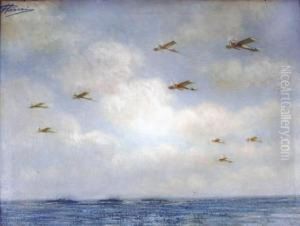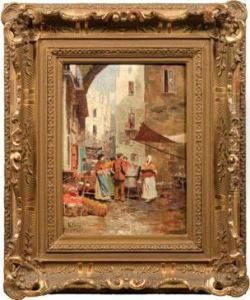R. Pasini Paintings
Raffaele Pasini, often referred to as R. Pasini, was an Italian artist known for his contribution to the 19th-century Italian painting scene. Born in 1826 in Cesena, Italy, he developed an interest in art at a young age. Pasini's early education and influences remain relatively undocumented, but like many artists of his era, he likely received formal training in the techniques of painting and may have apprenticed with established artists.
Pasini's work is characterized by its vibrant colors and dynamic compositions, often depicting genre scenes, landscapes, and historical subjects. Throughout his career, he honed a distinctive style that combined the Romantic sensibility of his time with a realism that captured the essence of daily life and the natural world.
He lived during a period of significant political and social change in Italy, which culminated in the unification of the country in 1861. The art of this period often reflected the tumultuous nature of the times, with many artists contributing to the burgeoning sense of national identity through their work. Pasini, however, focused more on the timeless qualities of human experience and the beauty of the Italian landscape rather than overt political statements.
Despite his talent, R. Pasini is not as widely recognized today as some of his contemporaries. Nevertheless, his paintings have been appreciated for their technical skill and emotional depth. They can be found in various Italian regional art galleries and private collections. He passed away in 1903, leaving behind a modest but respected body of work that continues to be studied and admired by art historians and enthusiasts of Italian art.

